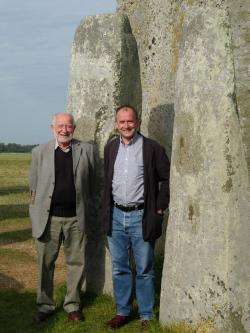Stonehenge 'No Place for the Dead', Says Expert

Professor Timothy Darvill, Head of the Archaeology Group at Bournemouth University, has breathed new life into the controversy surrounding the origins of Stonehenge by publishing a theory which suggests that the ancient monument was a source and centre for healing and not a place for the dead as believed by many previous scholars.
After publication of his new book on the subject - Stonehenge: The Biography of a Landscape (Tempus Publishing) - Professor Darvill also makes a case for revellers who travel to be near the ancient monument for the summer solstice in June to reconsider. Instead, Professor Darvill believes that those seeking to tap into the monument’s powers at its most potent time of the year should do so in December during the winter solstice when our ancestors believed that the henge was ‘occupied’ by a prehistoric god - the equivalent of the Roman and Greek god of healing, Apollo – who ‘chose’ to reside in winter with the Hyborians, long believed to be the ancient Britons.
The basis for Professor Darvill’s findings lies in the Preseli Mountains in west Wales where he and colleague Professor Geoffrey Wainwright have located an exact origin for the bluestones used in the construction of Stonehenge some 250 km away.
“The questions most people ask when they consider Stonehenge is ‘why was it built?’ and ‘how was it was used?’” says Professor Darvill. “Our work has taken us to the Preseli Mountains to provide a robust context for the source of the bluestones and to explore various ideas about why those mountains were so special to prehistoric people”.
“We have several strands of evidence to consider. First, there have folklore in the form of accounts written in the 14th century which refer to a magician bringing the stones from the west of the British Isles to what we know as Salisbury Plain,” he continues. “It was believed that these particular stones had many healing properties because in Preseli, there are many sacred springs that are considered to have health-giving qualities; the water comes out of the rocks used to build Stonehenge and it’s well established that as recently as the late 18th century, people went to Stonehenge to break off bits of rock as talismans.
“Also, around the Stonehenge landscape, there are many burials, some of which have been excavated and amongst these there are a good proportion of people who show sings of being unwell – some would have walked with a limp or had broken bones – just the sort of thing that in modern times pressurises people to seek help from the Almighty.
“In the case of Stonehenge, I suggest that the presiding deity was a prehistoric equivalent of the Greek and Roman god of healing, Apollo. Although his main sanctuary was at Delphi in Greece, it is widely believed that he left Greece in the winter months to reside in the land of the Hyborians – usually taken to be Britain.
“Altogether, and with the incorporation of the stones from Wales, Stonehenge is a very powerful and positive place of pilgrimage, although whether the monument’s healing power actually worked is a matter for further discussion,” he concludes.
Source: Bournemouth University





















